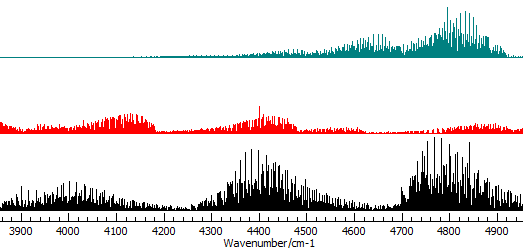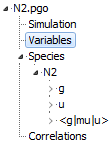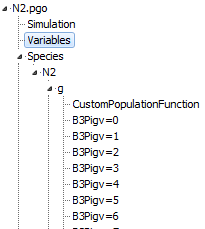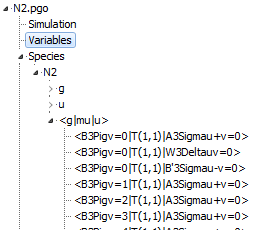| |
<Prev Next> |
N2.pgo simulates many bands of the B3Πg - A3Σ+u, B'3Σ−u - B3Πg and W3Δu - B3Πg electronic transitions, commonly seen in emission in discharges. It provides a good example of a file containing multiple electronic states, and the file is set up to simulate fluorescence; see Emission Spectra for how this is set up. It also makes use of a Custom Population Function; as supplied there are two rotational temperatures, one set in the normal way and the other set in the Variables object. A separate vibrational temperature, Tvib is set in the Simulation object. Note that some constants for some of the bands are based on extrapolated values.

N2.pgo is
based on the work described in "
The spectrum of N2 from 4500 to 15700 cm−1
revisited with PGOPHER", Colin M. Western, Luke
Carter-Blatchford, Patrick Crozet, Amanda J. Ross,
Jérôme Morville and Dennis Tokaryk, Journal
of Quantitative Spectroscopy and Radiative Transfer, 219
127-141 (2018) doi:10.1016/j.jqsrt.2018.07.017.
See also the supplementary data with the same title in the
University of Bristol repository, doi:10.5523/bris.1u7h3szdcpk5r2dfa1hao9o2u1,
which contains the spectra and files used in the preparation
of N2.pgo.
The overall structure of the file is a g Manifold containing all the B3Πg vibrational states, and a u Manifold containing all the A3Σ+u, B'3Σ−u and W3Δu vibrational states, and a <g|mu|u> Transition Moments object containing the transition moments linking the states. See the collapsed and expanded views below.


